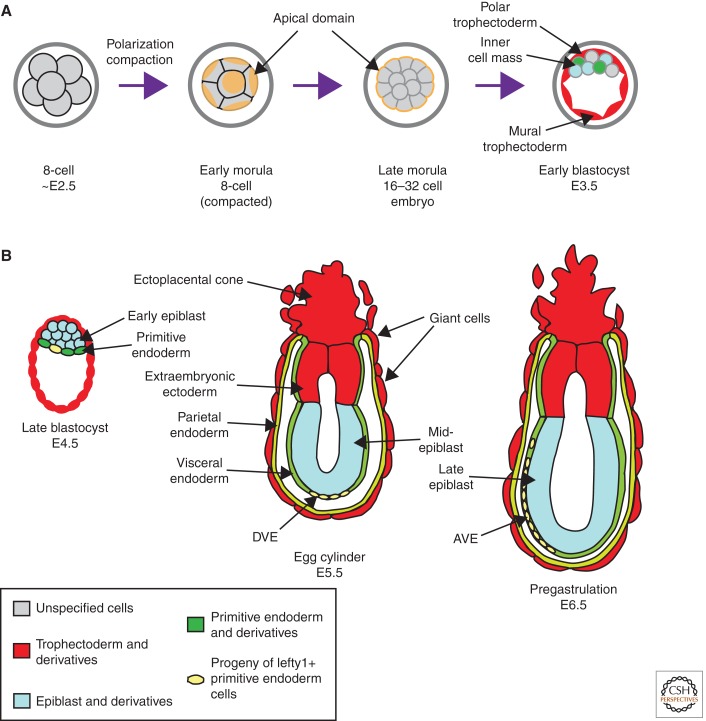Figure 1.
Overview of mouse peri-implantation development. (A) Preimplantation stages. Blastomeres undergo compaction and apicobasal polarization at the 8-cell stage. By embryonic day 3.5 (E3.5), the embryo forms a blastocyst. At E3.5 the trophectoderm (TE) is a single-cell polarized epithelium on the surface of the embryo, while the inner cell mass (ICM) consists of a mass of apolar cells eccentrically located in the blastocyst interior. (B) Early postimplantation stages. By E4.5, the epiblast (EPI) and primitive endoderm (PE) layers have clearly segregated in the ICM, and the embryo is ready to implant in the uterus. After implantation, the TE elaborates into extraembryonic ectoderm, the ectoplacental cone, and trophoblast giant cells, whereas the PE further differentiates into the visceral endoderm (VE), parietal endoderm, and specialized subpopulations of VE: first the distal visceral endoderm (DVE) at E5.5, and subsequently the anterior visceral endoderm (AVE) at E6.5.

